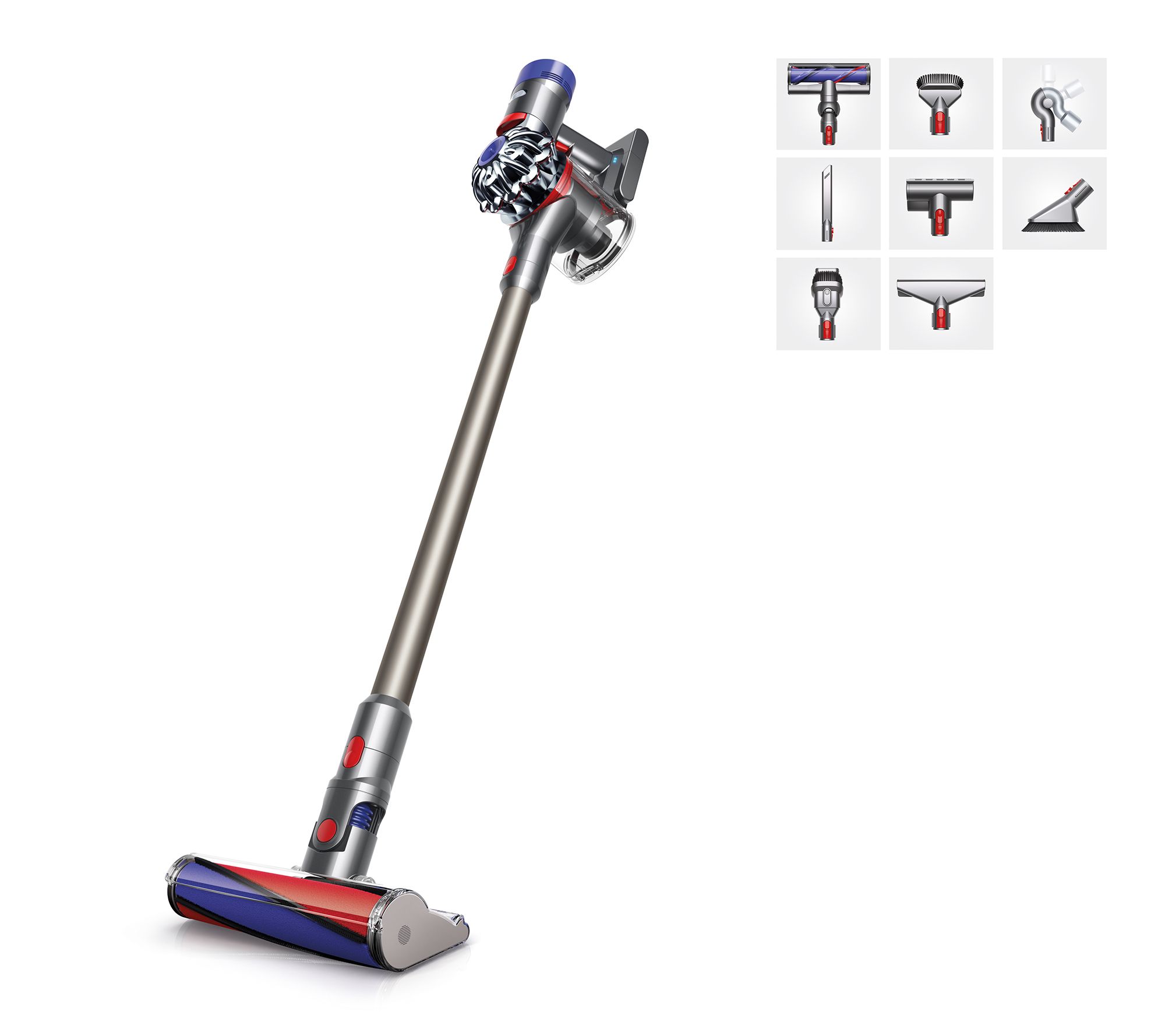Dyson V11™ Animal cordless vacuum cleaner
Engineered for homes with pets. Powerful cleaning on floors and carpets. LED screen displays cleaning modes and battery life.
Powerful cleaning on floors and carpets
An integrated digital motor spins the brush bar up to 60 times a second. It drives stiff nylon bristles deep into carpet to remove dirt, and carbon fiber filaments capture fine dust on hard floors.
LED Screen
Displays cleaning modes and lets you switch easily between Eco, Auto, and Boost.
The right cleaning mode for the right task
Three cleaning modes optimized for a variety of tasks. The right balance of power and run time, where you need it.
Integrated power management system
Dyson’s battery technology and battery-saving trigger help to provide our longest run time by only using power when you need it.
‘Point and shoot’ hygienic bin emptying
The ‘point and shoot’ mechanism hygienically ejects dust and debris deep into your bin, in one action – so there’s no need to touch the dirt.
Drop-in docking
The Dyson V11™ vacuum drops into the wall-mounted dock, to charge it and tidily store tools. So it’s ready to grab and go.
Powered by a Dyson Hyperdymium™ motor
Twice the suction of any cordless vacuum.¹
Fade-free power
The seven-cell nickel-cobalt-aluminum click-in battery has the fade-free power to clean here, there, and everywhere around your home.
14 cyclones
14 cyclones generate forces of more than 79,000g to fling microscopic particles – such as pollen and bacteria – into the bin.
Whole-machine filtration
The fully-sealed filtration system traps 99.99% of particles as small as 0.3 microns – expelling cleaner air.‡
Acoustically engineered
Designed to absorb vibrations and dampen noise, to keep sound levels down.
In-line configuration
The motor, bin, and cyclone are aligned, so air is drawn into the cyclones in a straight line – helping to create powerful Dyson suction.
Additional information
| Height | 10.28 in |
|---|---|
| Length | 49.65 in |
| Width | 9.84 in |
| Weight | 6.68 lb |
| Charge time | 4.5 hrs |
| Run time | Up to 60* min |
| Cyclone technology | 14 concentric cyclones |
| Bin volume | 0.2 gallon |
| Suction Power (Boost Mode) | 185 AW |






by Helix
bigger and better than my old 8 animal and run times are so much longer
by Dee
I’ve been battling with a canister vacuum for years. With carrying the heavy canister all over my house and up the stairs, along with tripping over the cord and hose. Finally went for the Dyson and I couldn’t be happier. This cordless vacuum is phenomenal, no cord, light weight and the suction is incredible. It’s slim design actually can go under most of my furniture, no more moving furniture.
by Daniel
When I say that this vacuum was the best purchase I have ever made I am not kidding!!
I have never had a vacuum more powerful or more easy to use in my life! The price of this product seems a bit expensive but it is worth every penny ! I am actually an amputee and spend a good amount of time in a wheelchair or not using my prosthetic- this cordless vacuum Has been an absolute game changer in my ability to clean I wouldn’t floors and carpets I just rolling around I’m not getting wrapped up in cords !We have a German Shepherd who sheds quite a bit especially and spring in late summer this vacuum makes it look like we don’t even own a pet!!If you’re on the fence about buying it jump over the other side and made the purchase you will never regret buying this vacuum!
by Jon
My V10 gave me an introduction to Dyson but I wanted more battery power and suction so stepped up to the V11. It pulls out dirt that other vacuums miss. For my hardwood floors I read that the universal roller head could be harsh and for this I use the soft fuzzy roller from my V10 Absolute, and I recommend this purchase for anyone with a V11. Being free of cords and rolling canisters has made vacuuming fun.
by Chow
They are the most efficient especially with a shedding puppy!
by Nick
Very good overall. Nice suction. Battery life is a stretch for a whole house. Need to empty canister at least once for each floor of a house.